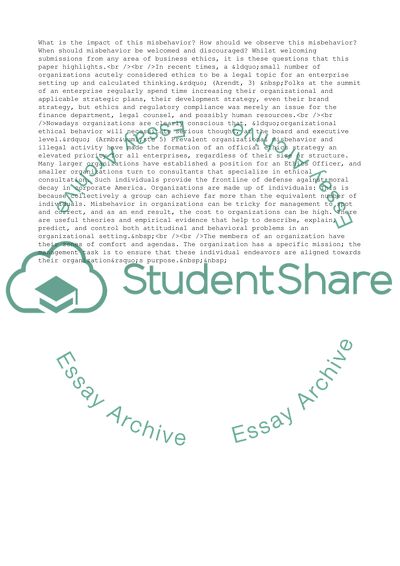Cite this document
(What Is Organizational Misbehavior and Why Does It Occur Research Paper, n.d.)
What Is Organizational Misbehavior and Why Does It Occur Research Paper. https://studentshare.org/management/1708687-what-is-organisational-misbehaviour-and-why-does-it-occur-critically-evaluate-its-impact-on-the-organisation
What Is Organizational Misbehavior and Why Does It Occur Research Paper. https://studentshare.org/management/1708687-what-is-organisational-misbehaviour-and-why-does-it-occur-critically-evaluate-its-impact-on-the-organisation
(What Is Organizational Misbehavior and Why Does It Occur Research Paper)
What Is Organizational Misbehavior and Why Does It Occur Research Paper. https://studentshare.org/management/1708687-what-is-organisational-misbehaviour-and-why-does-it-occur-critically-evaluate-its-impact-on-the-organisation.
What Is Organizational Misbehavior and Why Does It Occur Research Paper. https://studentshare.org/management/1708687-what-is-organisational-misbehaviour-and-why-does-it-occur-critically-evaluate-its-impact-on-the-organisation.
“What Is Organizational Misbehavior and Why Does It Occur Research Paper”. https://studentshare.org/management/1708687-what-is-organisational-misbehaviour-and-why-does-it-occur-critically-evaluate-its-impact-on-the-organisation.


